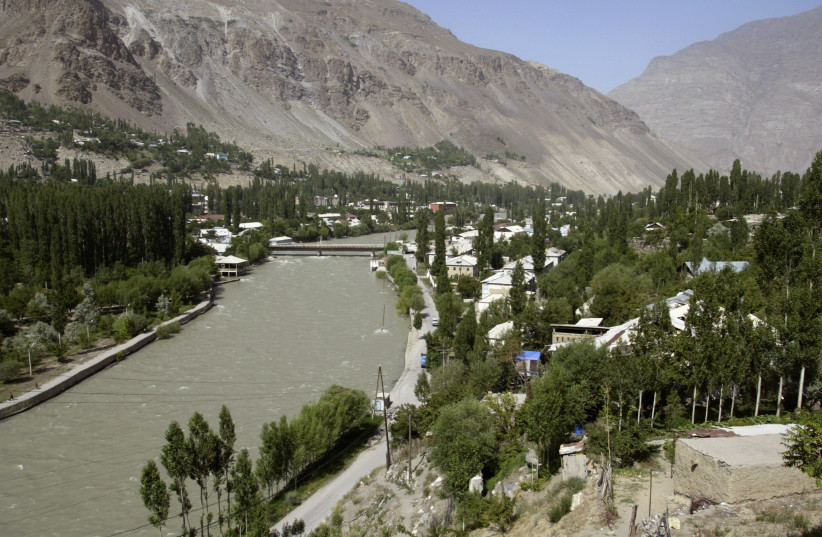Ancient Greek letters were found carved on a rock in the mountainous area of Tajikistan, a country in Central Asia.
Written on the stone was, "ΕΙΔΙΗΛΟ Υ…ϸΑΟΝΑΝϸΑΕ ΟΟΗ-ΜΟ ΤΑΚ-ΤΟΕ," which according to Nicholas Sims-Willions, a specialist in the study of the Bactrian language, means, "This is the...of the king of kings, Vima Tactu."
Due to the natural landscape of Tajikistan, archaeologists don't normally have the opportunity to discover new monuments.
As the surrounding area of the newly discovered rock is a hard-to-reach area, local residents have offered to help the archaeologists by gathering information for them, which has been done before.
In 1932, a basket with documents was found by a local shepherd on Mount Mug which, because of the area, was brought to archaeologists who then learned that it was the first text document of the historical language of Sogdian, which then led to the discovery of the ancient settlement of Penjikent.

How was the rock discovered?
In a similar situation to the local shepherd, a resident of a nearby village came across the engraved rock in the mountains.
Bobomulloev Bobomullo, a researcher from the Institute of History, Archaeology and Ethnography of the National Academy of Sciences of Tajikistan, became interested in the news and took over the examination.
After looking at it closely, the inscriptions turned out to be ancient writing. It was located on the northernmost part of the gorge near the Almosi River.
According to the shepherd that found the inscription, when he was there for the first time, there were more inscriptions on many different rocks, but due to avalanches, many of the inscriptions were damaged and fell down the mountains.
What was Bactria and its history?
According to World History Encyclopedia, Bactria is a historic region in Central Asia that was part of the Persian Empire.
Historically, it was a unified region but has been divided into what we now know as Turkmenistan, Afghanistan, Uzbekistan, Tajikistan and Pakistan.
Even after the defeat of Darius III of Persia, a self-proclaimed successor of Darius III by the name of Bessus, led a resistance against Alexander the Great. Alexander, in the end, conquered Bactria between 329-327 BCE, which he held until his death.
After his death, it became part of the Seleucid Empire and governed most of the Middle East during the Hellenistic period.
